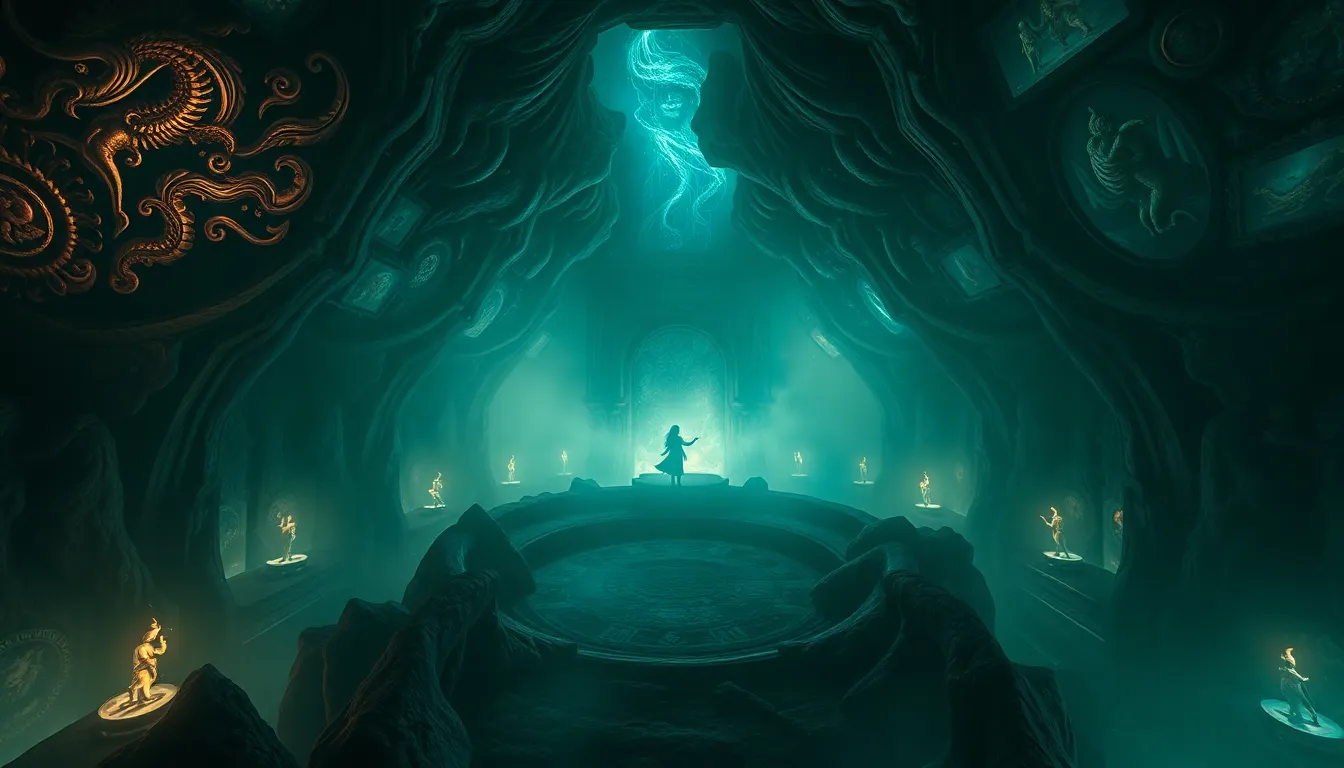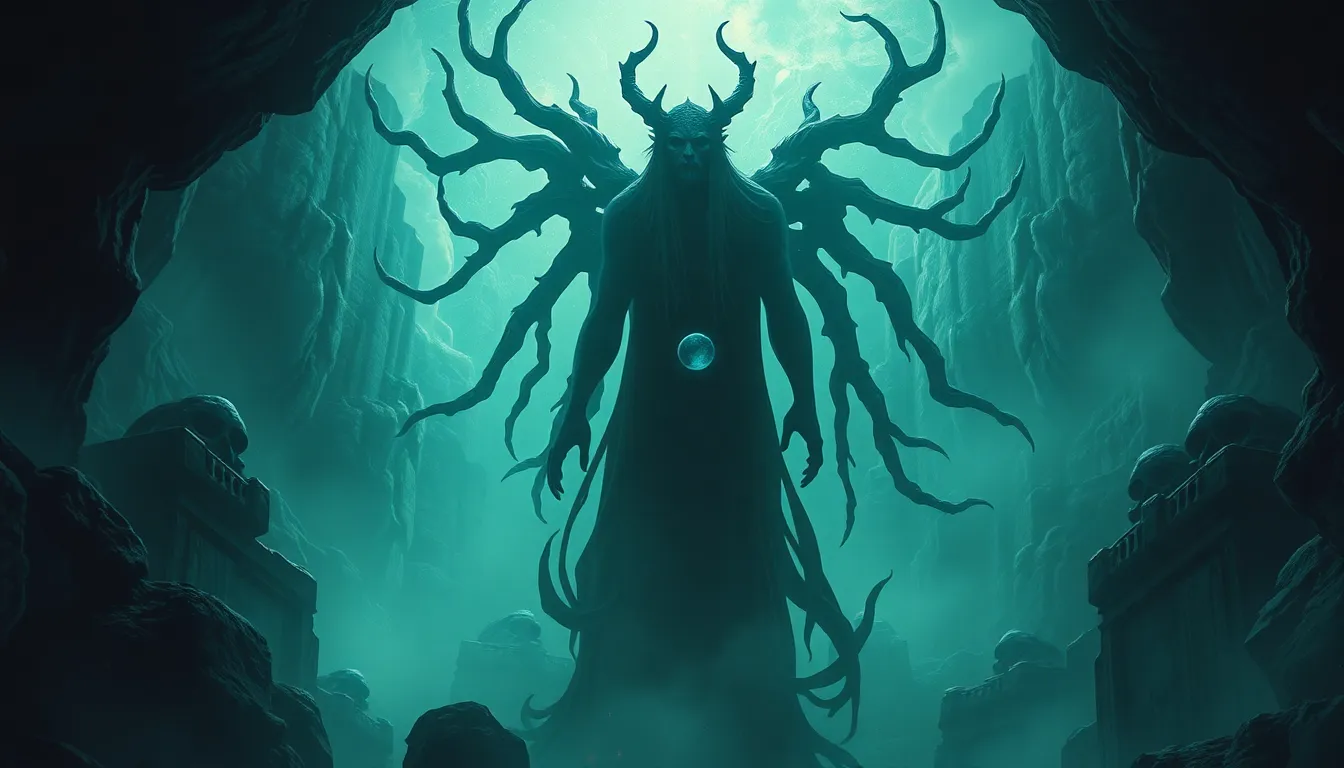Beyond Ragnarok: The Serpent’s Potential Role After the Norse Apocalypse
I. Introduction
The Norse mythology is rich with tales of gods, monsters, and the inevitable end of the world known as Ragnarok. This cataclysmic event represents the culmination of a series of prophecies and battles, leading to the death of many gods, including Odin and Thor. Among the most significant figures in this narrative is Jörmungandr, the World Serpent, who is destined to play a crucial role in the events of Ragnarok.
This article aims to explore the potential role of Jörmungandr after Ragnarok, examining how this iconic figure may symbolize both destruction and renewal in the aftermath of the apocalypse.
II. Understanding Jörmungandr: The World Serpent
Jörmungandr, often referred to as the Midgard Serpent, is a colossal serpent that encircles the Earth, biting its own tail. This imagery of the ouroboros is significant, symbolizing the cyclical nature of existence.
In Norse cosmology, Jörmungandr is the child of the trickster god Loki and the giantess Angerboda. Its immense size and power represent a formidable force of chaos and a critical element in the balance of the cosmos. The serpent’s relationship with Thor is particularly noteworthy, as they are destined to confront each other during Ragnarok, leading to their mutual destruction.
III. The Events of Ragnarok
Ragnarok unfolds through a series of catastrophic events, including the death of many gods, natural disasters, and the rise of monstrous beings. Key events leading up to Ragnarok include:
- The Fimbulwinter: A great winter that lasts for three years, heralding the onset of the end times.
- The breaking of bonds: Loki’s children, including Jörmungandr, are unleashed upon the world.
- The gathering of forces: Giants and monsters rally against the gods.
During the climactic battle, Jörmungandr emerges from the ocean, unleashing its fury and engaging Thor in a fierce confrontation. The two are fated to kill each other, marking a pivotal moment in the battle between order and chaos.
After their confrontation, the world is left in ruins, raising questions about the fate of Jörmungandr and the potential for rebirth.
IV. Symbolism of the Serpent in Mythology
Jörmungandr embodies a complex duality within Norse mythology. As a symbol of chaos and destruction, the serpent represents the forces that threaten to dismantle the established order. However, it also embodies the potential for transformation and renewal, highlighting the cyclical nature of existence.
Some key aspects of the Serpent’s symbolism include:
- Chaos and Destruction: Jörmungandr’s role as an agent of chaos emphasizes the inevitability of destruction in the natural order.
- Transformation and Renewal: The destruction brought by the Serpent can lead to new beginnings, mirroring the themes of rebirth found in many mythologies.
- The Ouroboros: The image of the serpent eating its own tail suggests the interconnectedness of life, death, and rebirth.
This duality invites contrasting interpretations, highlighting the complexity of Jörmungandr’s existence within the mythological framework.
V. Theories on the Serpent’s Role After Ragnarok
In Norse mythology, the concept of rebirth suggests that even after Ragnarok, life persists. The potential roles Jörmungandr could play in a post-apocalyptic world are intriguing and multifaceted:
- Guardian of New Life: Jörmungandr may symbolize the protective force of nature, safeguarding the renewal of the world.
- Harbinger of Change: As a figure of transformation, the Serpent could represent the inevitable changes that follow destruction.
- Reconnecting with Nature: Jörmungandr’s existence could inspire humanity to reconnect with the natural world and respect its cycles.
Connections can also be drawn to other mythologies where serpentine figures embody similar themes of chaos, regeneration, and balance, such as the Aztec god Quetzalcoatl or the Hindu Naga.
VI. Jörmungandr in Modern Interpretations
In contemporary literature and media, Jörmungandr continues to captivate audiences, often appearing in adaptations of Norse mythology, fantasy novels, and films. The resurgence of interest in Norse mythology has led to Jörmungandr being featured in various forms of popular culture, including:
- Books: Novels exploring Norse mythology often delve into the character of Jörmungandr, portraying it as both a villain and a misunderstood force.
- Video Games: Games like “God of War” and “Assassin’s Creed Valhalla” have introduced players to the World Serpent, showcasing its immense power and significance.
- Television: Series such as “Vikings” and adaptations of mythological tales frequently include references to Jörmungandr, emphasizing its role in the narrative.
This modern reinterpretation allows audiences to engage with Jörmungandr’s legacy, highlighting its relevance in contemporary discussions about chaos, nature, and transformation.
VII. Philosophical and Cultural Implications
The role of Jörmungandr in Norse mythology offers profound insights into the nature of chaos and order. Understanding the Serpent’s significance allows for a deeper exploration of human experience, particularly in relation to:
- Chaos and Order: Jörmungandr’s existence serves as a reminder of the delicate balance between chaos and order in the universe.
- Rebirth and Transformation: The cyclical nature of existence, as embodied by the Serpent, prompts reflections on personal and societal transformation.
- Sustainability Challenges: Jörmungandr can be seen as a metaphor for contemporary environmental challenges, urging humanity to respect the natural world.
These implications invite us to reflect on our relationship with chaos and the potential for renewal in our lives and societies.
VIII. Conclusion
In summary, Jörmungandr holds a central place in Norse mythology, embodying themes of chaos, destruction, and the potential for rebirth. Its narrative extends beyond the confines of Ragnarok, prompting discussions about the cyclical nature of existence and the importance of transformation.
Exploring mythological figures like Jörmungandr in modern contexts enriches our understanding of their significance and relevance. The Serpent’s legacy continues to resonate, reminding us of the intricate balance between chaos and order and the ever-present possibility of renewal in the face of destruction.



